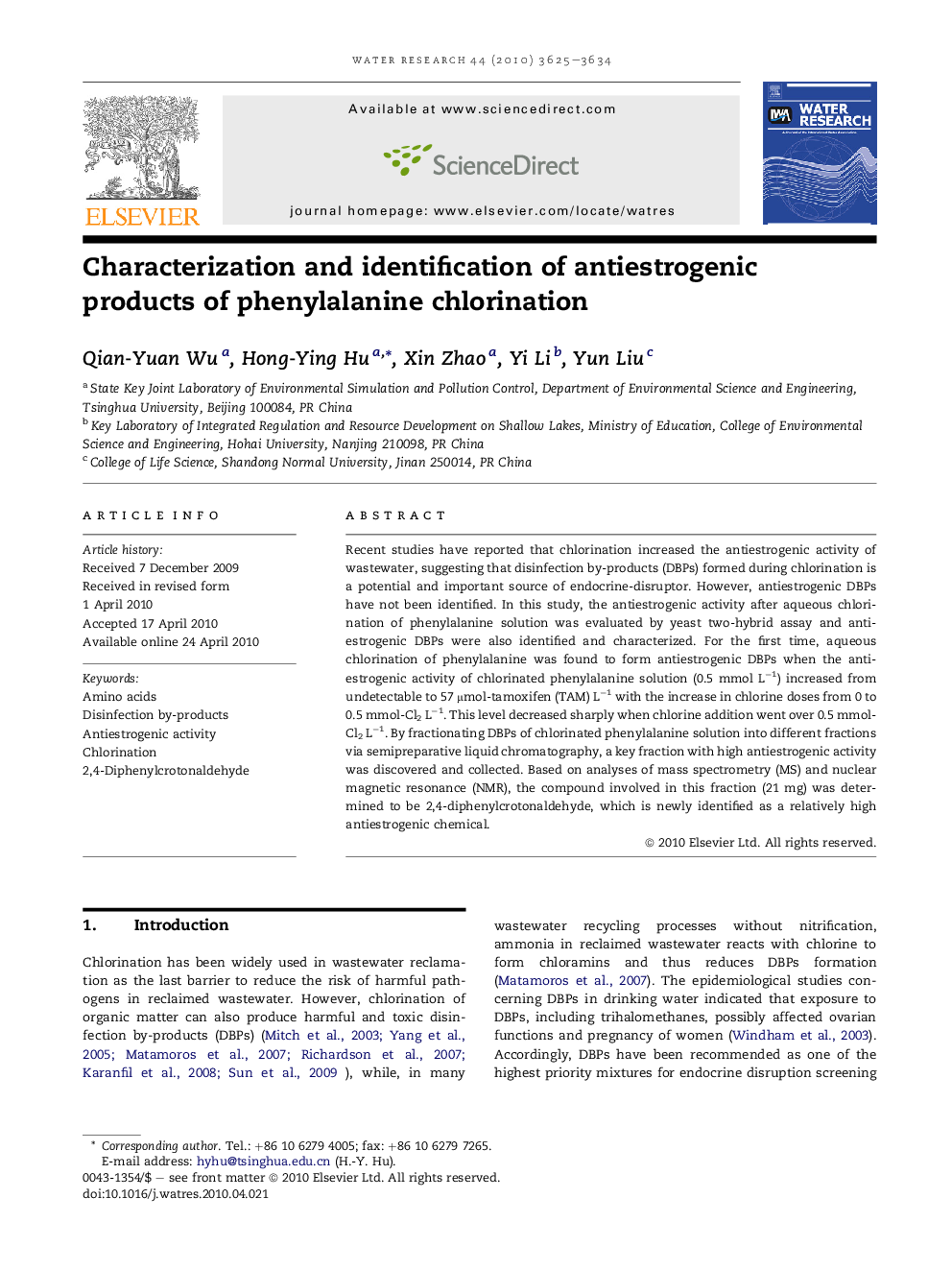| Article ID | Journal | Published Year | Pages | File Type |
|---|---|---|---|---|
| 4484060 | Water Research | 2010 | 10 Pages |
Recent studies have reported that chlorination increased the antiestrogenic activity of wastewater, suggesting that disinfection by-products (DBPs) formed during chlorination is a potential and important source of endocrine-disruptor. However, antiestrogenic DBPs have not been identified. In this study, the antiestrogenic activity after aqueous chlorination of phenylalanine solution was evaluated by yeast two-hybrid assay and antiestrogenic DBPs were also identified and characterized. For the first time, aqueous chlorination of phenylalanine was found to form antiestrogenic DBPs when the antiestrogenic activity of chlorinated phenylalanine solution (0.5 mmol L−1) increased from undetectable to 57 μmol-tamoxifen (TAM) L−1 with the increase in chlorine doses from 0 to 0.5 mmol-Cl2 L−1. This level decreased sharply when chlorine addition went over 0.5 mmol-Cl2 L−1. By fractionating DBPs of chlorinated phenylalanine solution into different fractions via semipreparative liquid chromatography, a key fraction with high antiestrogenic activity was discovered and collected. Based on analyses of mass spectrometry (MS) and nuclear magnetic resonance (NMR), the compound involved in this fraction (21 mg) was determined to be 2,4-diphenylcrotonaldehyde, which is newly identified as a relatively high antiestrogenic chemical.
